Mutant NPM1 Hijacks Transcriptional Hubs to Maintain Pathogenic Gene Programs in Acute Myeloid Leukemia
- PMID: 36455589
- PMCID: PMC9975662
- DOI: 10.1158/2159-8290.CD-22-0424
Mutant NPM1 Hijacks Transcriptional Hubs to Maintain Pathogenic Gene Programs in Acute Myeloid Leukemia
Abstract
Nucleophosmin (NPM1) is a ubiquitously expressed nucleolar protein with a wide range of biological functions. In 30% of acute myeloid leukemia (AML), the terminal exon of NPM1 is often found mutated, resulting in the addition of a nuclear export signal and a shift of the protein to the cytoplasm (NPM1c). AMLs carrying this mutation have aberrant expression of the HOXA/B genes, whose overexpression leads to leukemogenic transformation. Here, for the first time, we comprehensively prove that NPM1c binds to a subset of active gene promoters in NPM1c AMLs, including well-known leukemia-driving genes-HOXA/B cluster genes and MEIS1. NPM1c sustains the active transcription of key target genes by orchestrating a transcription hub and maintains the active chromatin landscape by inhibiting the activity of histone deacetylases. Together, these findings reveal the neomorphic function of NPM1c as a transcriptional amplifier for leukemic gene expression and open up new paradigms for therapeutic intervention.
Significance: NPM1 mutation is the most common mutation in AML, yet the mechanism of how the mutant protein results in AML remains unclear. Here, for the first time, we prove mutant NPM1 directly binds to active chromatin regions and hijacks the transcription of AML-driving genes. See related article by Uckelmann et al., p. 746. This article is highlighted in the In This Issue feature, p. 517.
©2022 The Authors; Published by the American Association for Cancer Research.
Figures

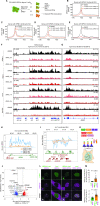
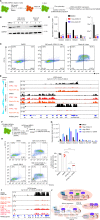
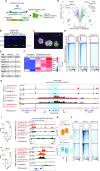
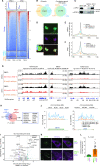
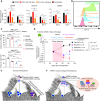
Comment in
-
Mutant NPM1 Directly Regulates Oncogenic Transcription in Acute Myeloid Leukemia.Cancer Discov. 2023 Mar 1;13(3):746-765. doi: 10.1158/2159-8290.CD-22-0366. Cancer Discov. 2023. PMID: 36455613 Free PMC article.
Comment on
-
Mutant NPM1 Directly Regulates Oncogenic Transcription in Acute Myeloid Leukemia.Cancer Discov. 2023 Mar 1;13(3):746-765. doi: 10.1158/2159-8290.CD-22-0366. Cancer Discov. 2023. PMID: 36455613 Free PMC article.
References
-
- Brunetti L, Gundry MC, Goodell MA. New insights into the biology of acute myeloid leukemia with mutated NPM1. Int J Hematol 2019;110:150–60. - PubMed
-
- Falini B, Brunetti L, Sportoletti P, Martelli MP. NPM1-mutated acute myeloid leukemia: from bench to bedside. Blood 2020;136:1707–21. - PubMed
-
- Falini B, Nicoletti I, Martelli MF, Mecucci C. Acute myeloid leukemia carrying cytoplasmic/mutated nucleophosmin (NPMc+ AML): biologic and clinical features. Blood 2007;109:874–85. - PubMed
-
- Grisendi S, Mecucci C, Falini B, Pandolfi PP. Nucleophosmin and cancer. Nat Rev Cancer 2006;6:493–505. - PubMed
-
- Scott DD, Oeffinger M. Nucleolin and nucleophosmin: nucleolar proteins with multiple functions in DNA repair. Biochem Cell Biol 2016;94:419–32. - PubMed
Publication types
MeSH terms
Substances
Grants and funding
LinkOut - more resources
Full Text Sources
Medical
Molecular Biology Databases
Research Materials

